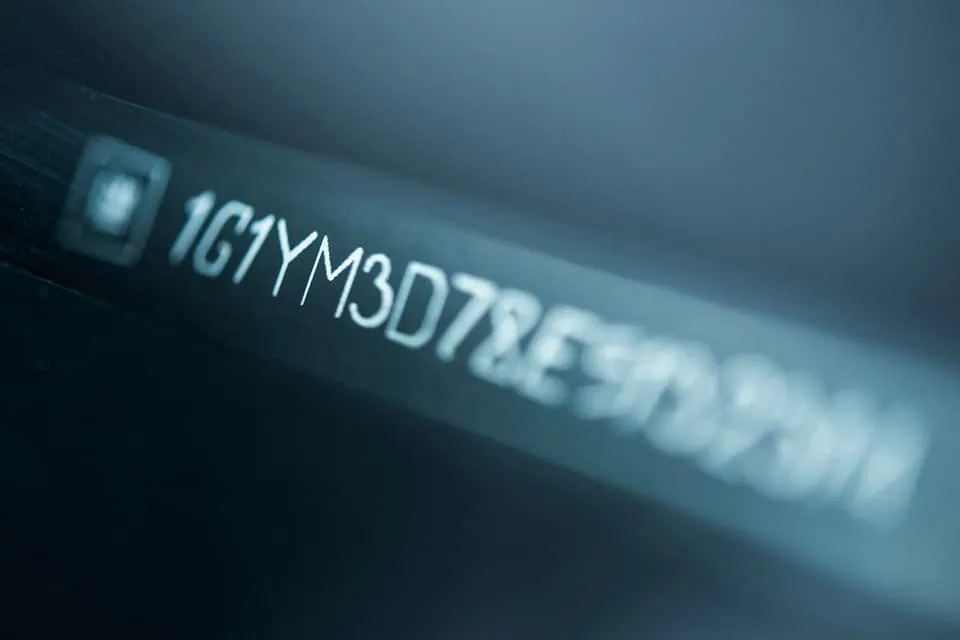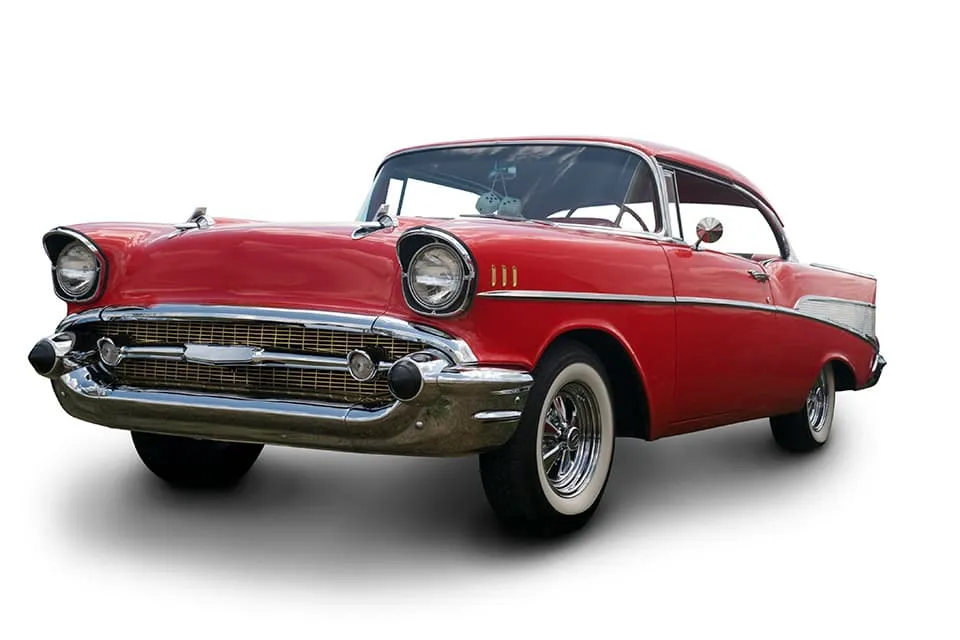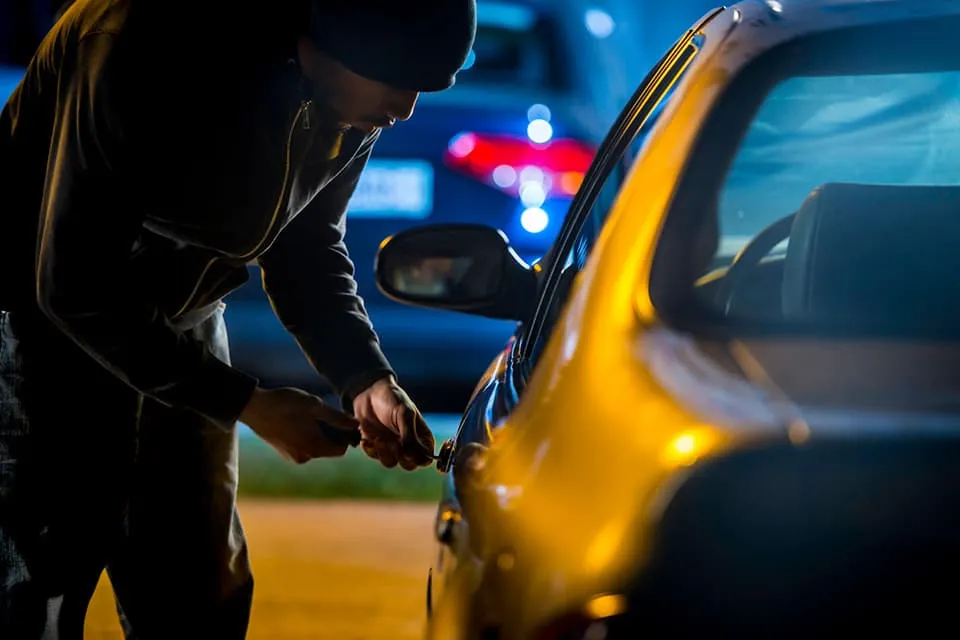What Is A VIN Number?

You've probably noticed a little metal plate on the dashboard of your car engraved with a set of numbers and letters. These characters combine to create your vehicle identification number or VIN (sometimes referred to colloquially as a "VIN number").
Every registered vehicle has a unique VIN, which functions like a car's individual fingerprint. Even if two cars are the same make and model, they will have their own 17-character VIN for the purposes of identification.
Almost every kind of civilian transportation vehicle has a VIN number, including:
- Motor vehicles: This includes any type or body style, including sedans, coupes, sports cars, hatchbacks, convertibles, minivans, station wagons, and SUVs.
- Motorcycles: No matter the size or horsepower, every motorcycle that touches the street requires a VIN. This includes sport bikes, choppers, cross-country bikes, and even dirt bikes if the driver intends to take them on the road.
- Towed vehicles: Towed vehicles are those that need another vehicle to haul them, like trailers, RV's, and campers.
- Scooters: While push scooters or other non-motorized variations do not require a VIN, any scooter you intend to take on the road or highway needs to have an identification number.
- Mopeds: Often confused with scooters, mopeds are a lower power but higher gas mileage alternative. Much like scooters, mopeds require a VIN number for legal street operation.
Certain types of vehicles, like boats, may get a variation of a VIN. In the case of watercraft, this is called a HIN or hull identification number. Airplanes get a similar serial number, usually called "tail numbers" due to their location on the aircraft's tail.
Vehicles have not always had these identifying numbers. In fact, since the creation of the first automobile in 1885, a large period of automotive history had almost no way to categorize individual vehicles. So how long has this system existed?
When Did VIN Numbers Start?

The first vehicle identification numbers were created in the mid 1950's through joint efforts by the Automobile Manufacturers Association, U.S. car manufacturer, and the U.S. government. Their goal was to create a way to identify each unique vehicle and facilitate better records keeping and organization.
From 1954 to 1981, VIN numbers were not standardized, so different car manufacturers would use whatever format they saw as most efficient. If you find a vehicle made before 1981, it's possible the VIN number will not be 17 characters long.
In 1981, the VIN format was standardized by the National Highway Traffic Safety Administration. They conformed to the standards developed by the International Organization for Standardization or ISO.
This coding system required a 17-character series of numbers and letters, excluding O, I, and Q; these were omitted due to their similarity to the numbers 0, 1, and 9. As a rule, no two vehicles made within 30 years of one another can have the same VIN. These numbers are stored in the Motor Vehicle Records database, and can be accessed using VIN check.
How To Read A VIN Number?
As the concept for a VIN number spread throughout the world, the 17 characters have different meanings depending on where your vehicle is registered. Each number is broken down into several informational categories:
- World manufacturer identifier
- Vehicle descriptor section
- Vehicle identifier section
- Check digit
- Model year
- Plant code
- Manufacturer identity
- Sequential number

- World Manufacturer Identifier: In most areas, the first three numbers or letters in the sequence are the world manufacturer identifier. This is used to show who manufactured the car, and is divided by car production volume. If a manufacturer makes less than 1,000 vehicles a year, the third digit is always "9". The first two characters usually denote the region the vehicle comes from.
- Vehicle Descriptor Section: Between the fourth and ninth places on the car VIN number sits the vehicle descriptor section. This identifies the type of vehicle, and can show other information like model and style. This varies depending on the manufacturer.
- Vehicle Identifier Section: Between the 10th and the 17th characters is the vehicle identifier section. Where the vehicle descriptor section shows what type the vehicle is, the vehicle identifier section helps a manufacturer identify an individually registered car.
- Check Digit: A check digit helps with VIN validation, and is used for all vehicles sold in North America. Validators compare the check digit to a calculated value, and if it doesn't match then that likely means a mistake has been made. In some cases, two unique VIN numbers could have a matching check digit, but there are separate processes for validation in these instances.
- Model Year: The 10th digit or letter is used to identify the model year of the vehicle. Much like with the exclusion of I, O and Q from the world manufacturer identifier, the letters U, Z and the number 0 are not used in the model year.
- Plant Code: Used in China and North America, the 11th character of a VIN number shows what assembly plant built the vehicle. Every plant has its own set of codes for the purposes of identification.
- Manufacturer Identity: Similar to the plant code, this part of the vehicle identification number helps identify the car's manufacturer.
- Sequential Number: Often referred to as a serial number, the final six characters of a VIN relate to specific production options and help further identify an individually registered vehicle.
Why Is The Vehicle Identification Number Important?
There are a variety of uses for a VIN number, and it is very helpful for many different industries and agencies. Here are a few situations that often require you to provide your car's VIN.
Finding A Car's Ownership History
Each owner of a used car is linked to that vehicle's VIN number. You can search this ownership history with GoodCar's vehicle history search tool. There you'll be shown the number of previous owners the car had, what length of time they owned the car, and who was the last owner of the vehicle before you.
Getting A Vehicle History Report
VIN numbers can help you determine a car's history of accidents and repairs. You can also see the title brand, and determine whether the car has been declared totaled or salvaged. Vehicle history reports can also yield other pieces of information, like the odometer reading or mileage, whether that car was sent back to a dealership, and a total service history.
Checking For Recalls
Manufacturer recalls can help identify major issues with a vehicle. If you are alerted in time, you can generally get these issues repaired for free. A VIN number can be used to find these safety recalls before that window closes. It's vital to get your car repaired in the case of a recall.
A famous example of a recall was for a car model known as the Pinto, manufactured by the Ford Motor Company. The car was manufactured between 1971 and 1976 before production was shut down due to a massive scandal. The fuel tank on the Pinto lacked reinforcement, and the bolts meant to secure this tank would instead pierce it. This led to cars catching fire and exploding. A recall was made to repair these vehicles, as failure to fix these issues could have led to further disaster
Identifying Stolen Vehicles

Law enforcement agencies often use VIN numbers to identify stolen vehicles, preventing them from being fraudulently resold. You have access to similar VIN databases; by running a VIN check on your used vehicle can tell you whether it has ever been stolen or reported stolen in the past. You want to make sure you aren't purchasing stolen property, and a VIN can prevent this from happening.
Buying Car Insurance
Car insurance companies will require you to provide your VIN number to verify and identify your specific vehicle. You will also need this number to get a car insurance quote, so the insurer can get your car's exact specifications.
How Do Car Insurance Companies Use A VIN Number?
Car insurance companies use your VIN to determine several factors that can influence your policy. They will look at your car's history, as well as the make, model, and year before providing you with a quote. They also want to make sure the car hasn't been stolen, as companies won't issue a policy to a car with a history of theft.
Car insurance companies also look at a vehicle's features, and may issue a discount based on this equipment. For instance, if your car has advanced anti-theft devices or safety features, you may pay a lower monthly rate.
Where To Find The VIN Number On a Car?
The VIN number is generally located on the driver's side dash. You can see the code from outside the car by looking through the driver's side window to where the corner meets the windshield. If the VIN is not there, you can open the door and look where the door latches when it's closed. If it's not on the dash, that's where the VIN should be. You can also find the VIN number on the vehicle title and registration, or on the insurance policy card.
How To Look Up A VIN Number?

There are a number of services that allow you to look up a 17-character VIN, but not all of them operate on reliable information. At GoodCar, we only use the most trusted databases to assemble our reports. We provide VIN lookup services, along with a variety of other search functionality. You can find recalls, residual value, and vehicle history reports at the click of a button. If you want a comprehensive vehicle identification number search engine, look no further than GoodCar. Try our service today!
FREE Vehicle Search
- Accidents
- Problem Checks
- Title Records
- Recalls
- Values
- Specs
-
InfoPay, Inc. (dba GoodCar) is an Approved NMVTIS Data Provider
-
-






























